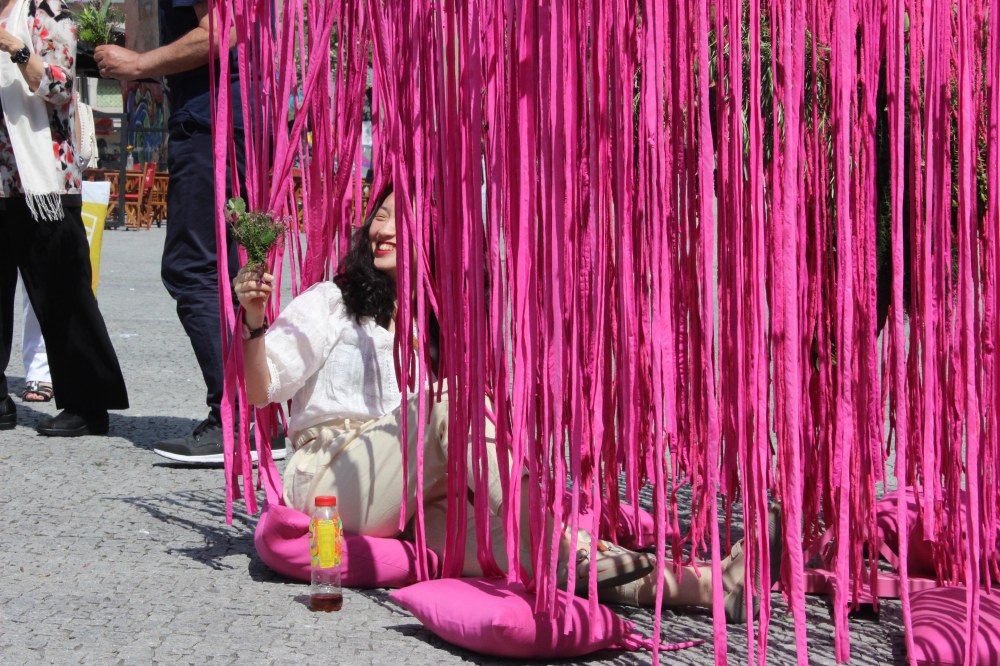Jardins Clandestinos
Poveiros Square, 18 – 23 May 2018


This is a public art and communication design project, which applied some of the techniques from the Creative Process and Design Thinking methods worked on the portuguese exchange. It took place from 18 May (communication elements started to be spreaded) to 23 May (installation and performance) Several concepts were addressed and developed through Creative Process stages.
This project intends to intensify the sensory experience of the urban space, as well as to explore means of non-visual communication. Approaching the senses regarding their cultural and social meanings, the city appears as the main place to approach the public. “Jardins Clandestinos” (portuguese for “Clandestine Gardens”) integrates different means of sensory stimulation, integrating the body in an inhabitable moment. Smell is one of the senses more important for this work as it represents a sense that has been alienated from theoretical debate in the areas of aesthetics and art philosophy. Smell is taken into consideration as a public sense, instead of a private one as it is commonly used: it is avoided the concept of perfume and focused the ideia os scent, emanated from aromatic plants and felt around the installations.



Colour appears as a way to state a contrast with the city colour palette, having the intervention, appealing to the aromatic universe of the flowers used. It is used as well as to create a language that unifies all the components of the intervention – communication objects, installation and performers. The installation, which was the central object, projected itself amongst the public using a strategy of communication, contaminating the Bonfim region. At this point, Design Thinking assumed an important role as it constituted a way to actively conceptualise the communication object, avoiding image and printing production as core concepts. In this way, the idea of “flyer” was subverted and integrated the sensory premises, appealing to the olfactory universe of the plants to invite the public to interact with the object.




The performance also is integrated as a part of the intervention that reflects critically about communication design methodologies and vision as a sense, bringing an artistic approach to some of those notions to address the public. The performer appears ultimately as an extension of the main object, bringing the body as vehicle of a message and a mean of engaging and channel the public to the intervention, what consequently altered the dynamics of the place. Through this project, public space revealed to be an excellent environment to promote engagement and seek the public as main target, allowing the artist and designer to explore different means to address a common subject.